As mindfulness teachers, we are not simply instructors; we are the caretakers of a transformative practice. Our role requires us to embody the very principles we share. As a straightforward way of outlining this here are the key pillars that ensure our teaching is both effective and ethically grounded.
Pillar 1: Cultivate Your Personal Practice First and Foremost
The most vital tool in your teaching is your own grounded presence. Before we ask our students to pause and observe, we must ourselves be profoundly familiar with that inner landscape. Trusted guidelines emphasise that a deep personal commitment forms the basis of ethical teaching.
Embodying the Practice:
- Sustained Practice is Essential: Maintain a sustained and ongoing practice. This includes daily formal meditation, ideally for at least 30 minutes, alongside informal mindfulness woven into your everyday life.
- Deepening Insight Through Retreats: To maintain personal insight and resilience, The British Association of Mindfulness Based Approaches (BAMBA) often require participation in regular residential or online, teacher-led retreats. These are typically 5-10 days in length, include 50% silence for reflection and space to absorb our practice. BAMBA have made it easier for teachers to satisfy their requirements for registration to BAMBA by allowing retreat time to be an accumulation of 2-3 days participation in annual teacher-led mindfulness meditation retreats with significant periods of silence.
- The Power of Transmission: Your authentic embodiment of the core attitudes of mindfulness is a powerful form of transmission. By bringing these attitudes—non-judging, patience, beginner’s mind, trust, non-striving, acceptance, and letting go—directly into our teaching and our way of being provides a model for teaching from our way of being.
Pillar 2: Commit to Ongoing Professional Development
Mindfulness teaching is not a destination; it is a continuous journey of learning and refinement. Remaining current ensures that your teaching remains informed and relevant.
Keys to Professional Growth:
- The Role of Regular Supervision: Engage in regular supervision with an experienced mindfulness teacher. This dedicated space is crucial for reflecting on your teaching practice, understanding how it interfaces with your personal practice, and navigating challenges that arise in our course sessions.
- Stay Evidence-Based: It is vital to keep up to date with the current and developing evidence base for mindfulness-based interventions. This ensures that your approach is relevant and grounded in fact-based research.
- Peer Connection: Build and maintain ongoing contacts with other mindfulness practitioners and teachers. This collaborative sharing allows you to learn from shared experiences and deepen your collective wisdom.
Pillar 3: Create a Safe and Inclusive Learning Environment
Your session environment, whether physical or virtual, must feel comfortable and supportive for all participants. True guidance requires sensitivity and individualised attention.
Guiding with Sensitivity:
- Use Invitation-Based Language: Always provide choices for participants. Use gentle, invitational language such as, “If it comfortable for you, you might choose to close your eyes, or you might choose to keep them open.”. This language affirms all types of participation and respects personal boundaries.
- Listen and Be Curious: Truly see your participants as individuals. Demonstrate genuine interest and curiosity about their unique experience. Active listening is non-negotiable, particularly when engaging in inquiry.
- Know Your Audience: Be aware of the specific population you are teaching, including their background, needs, and potential vulnerabilities. Guidance must be adjusted accordingly. Ensure you possess the appropriate professional background when working with clinical populations and prioritise EDI and trauma informed training.
Pillar 4: Teach from Direct Experience and Insight
As teachers, our primary role is to guide participants clearly and support them in exploring their own inner experiences. We teach from what we know intimately.
Supporting Exploration and Integration:
- Clarity in Guidance: Ensure that you clearly describe what participants are being invited to do during the practice.
- Creative Inquiry: Support your learners in exploring their inner landscape through reflective questioning. Use specific questions to help them identify benefits and integrate the practices into their daily routines. Examples of beneficial questions include: “How did that feel in your body?” or “When in your day might it be helpful for you to use this strategy?”.
- Model Acceptance as Action: We model acceptance not as passivity, but as a dynamic action: seeing clearly and allowing what is already present. This means allowing discomfort, distraction, or ease to simply be there, without trying to force the experience to be different. This radical acceptance is a fundamental aspect of the practice you are modelling for your students.
By consistently applying these evidence-based principles, you strengthen your personal integrity and, in turn, offer your students the highest quality, most authentic, and transformative mindfulness teaching possible.
Pillars image by Diedra Fettel from Pixabay


